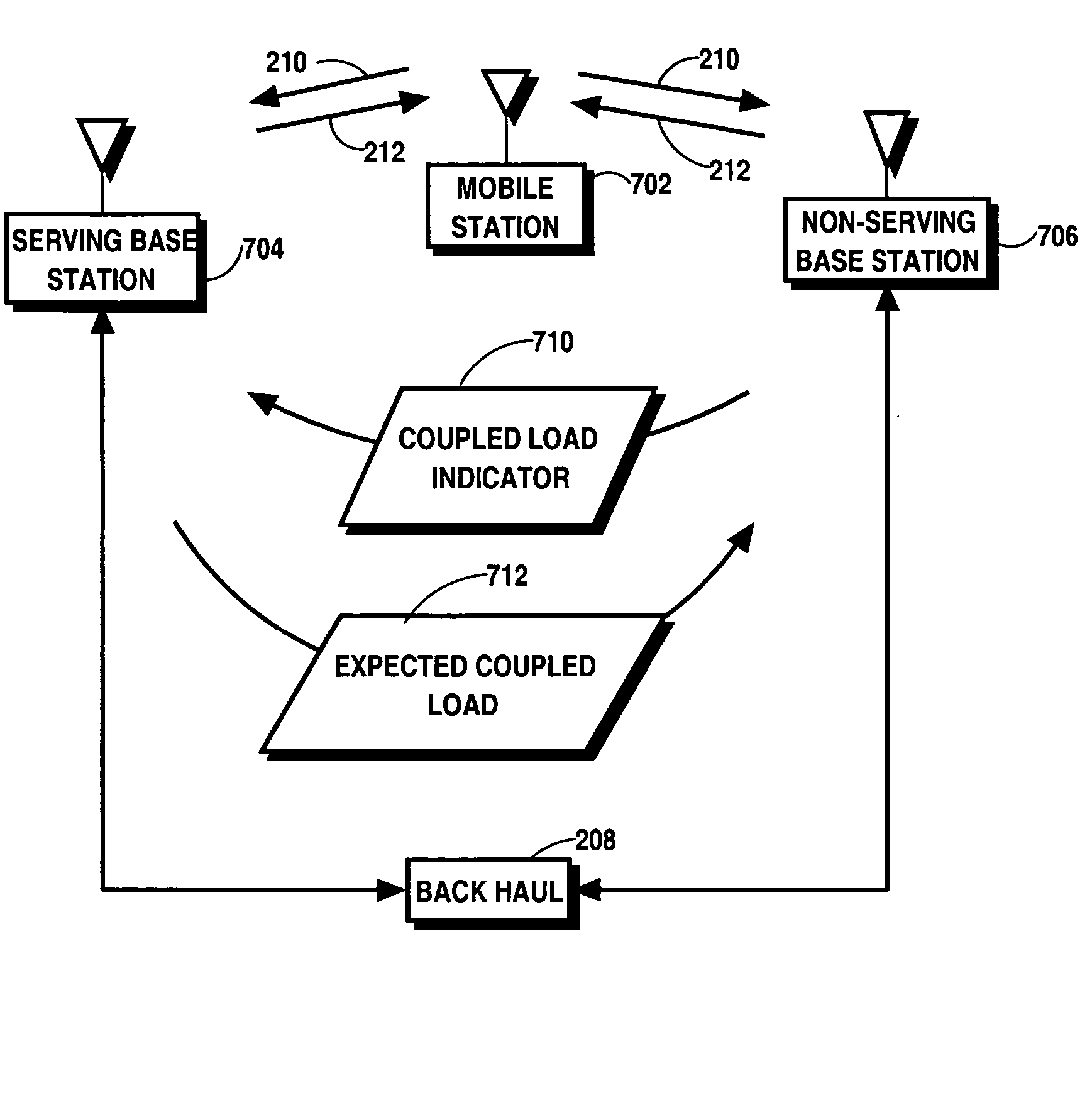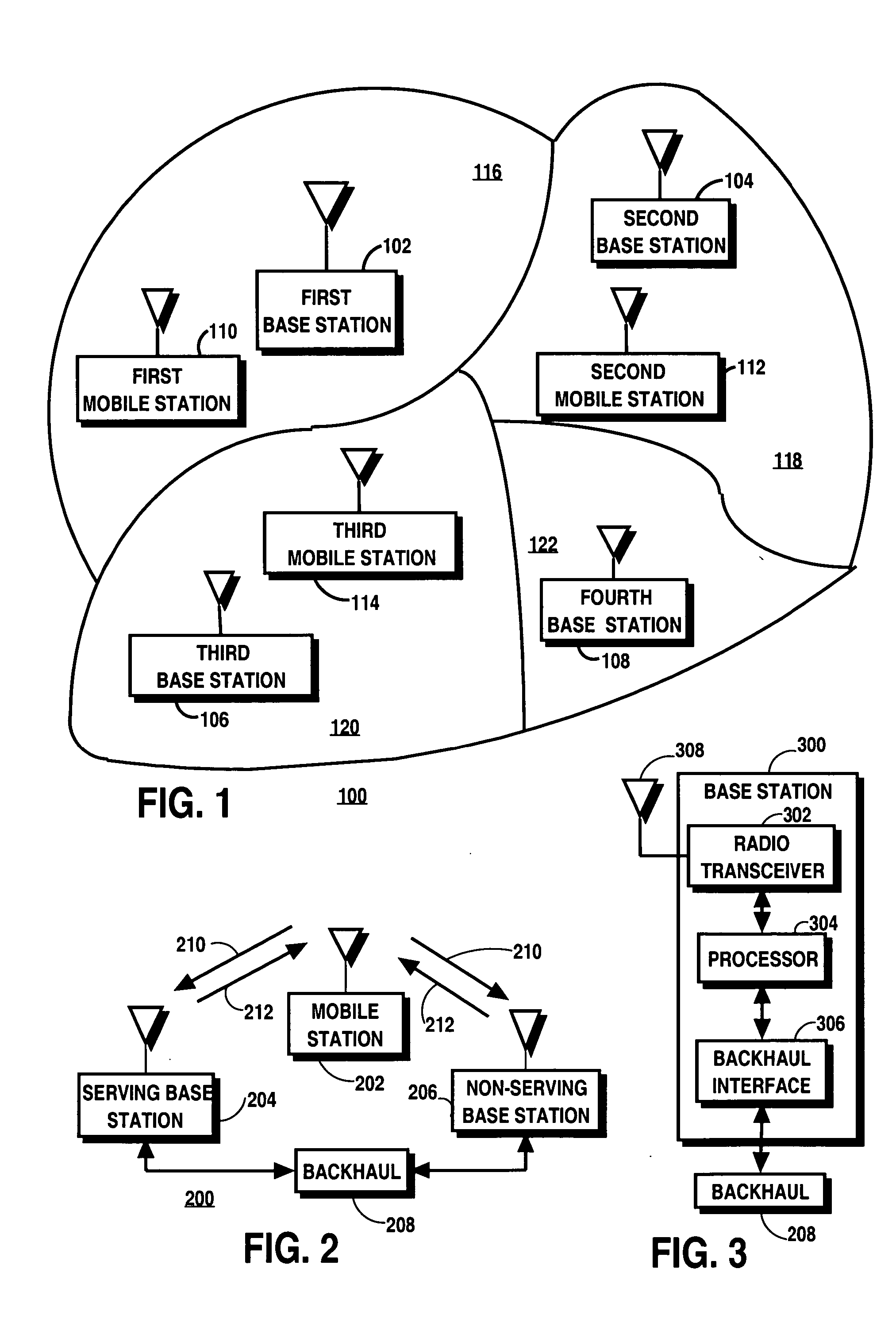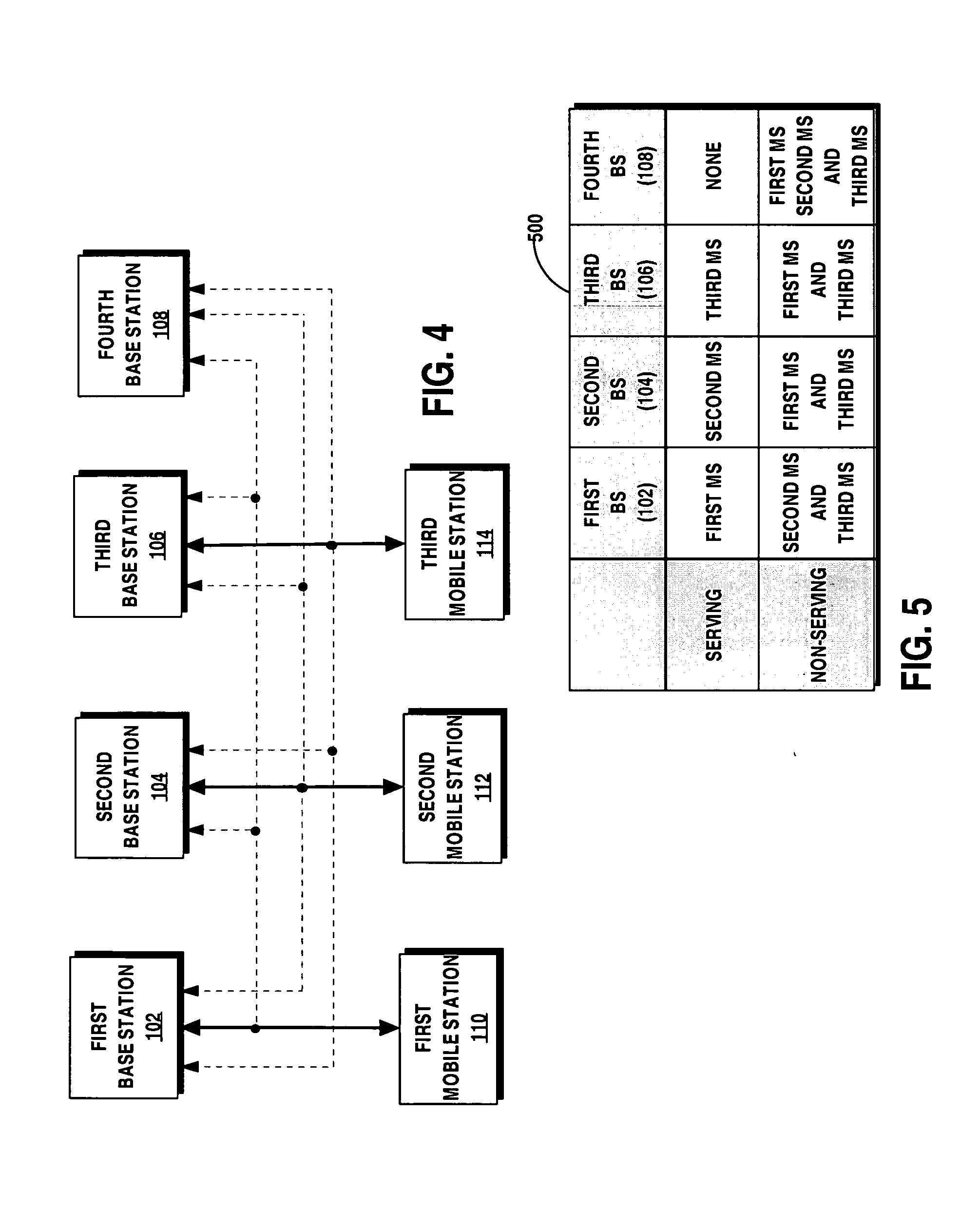Apparatus, system, and method for managing reverse link communication resources in a distributed communication system
a communication system and distributed communication technology, applied in the field of communication systems, can solve the problems of affecting the reverse link capacity of the base station, the interference of the reverse link signal transmitted from each mobile station to the other mobile station with the reverse link signal transmitted from the other mobile station,
- Summary
- Abstract
- Description
- Claims
- Application Information
AI Technical Summary
Problems solved by technology
Method used
Image
Examples
Embodiment Construction
An apparatus, system, and method manage reverse link communication in a distributed base station communication system. In the exemplary embodiments discussed herein, reverse link communication is distributively managed by base stations within a communication system. Delays associated with conventional techniques for managing reverse link channels are avoided since the reverse link management is not dependent on communications with a central controller. In a first exemplary embodiment, a non-serving base station determines a coupled load indicator based on coupled load parameters detected at the non-serving base station due to a mobile station that has identified another base station as the serving base station. The coupled load parameters are parameters that provide an indication of the coupled load experienced at the non-serving base station and may include parameters such as a normalized and averaged received signal-to noise ratio (SNR) and a mobile station speed. A coupled load ...
PUM
 Login to View More
Login to View More Abstract
Description
Claims
Application Information
 Login to View More
Login to View More - R&D
- Intellectual Property
- Life Sciences
- Materials
- Tech Scout
- Unparalleled Data Quality
- Higher Quality Content
- 60% Fewer Hallucinations
Browse by: Latest US Patents, China's latest patents, Technical Efficacy Thesaurus, Application Domain, Technology Topic, Popular Technical Reports.
© 2025 PatSnap. All rights reserved.Legal|Privacy policy|Modern Slavery Act Transparency Statement|Sitemap|About US| Contact US: help@patsnap.com



